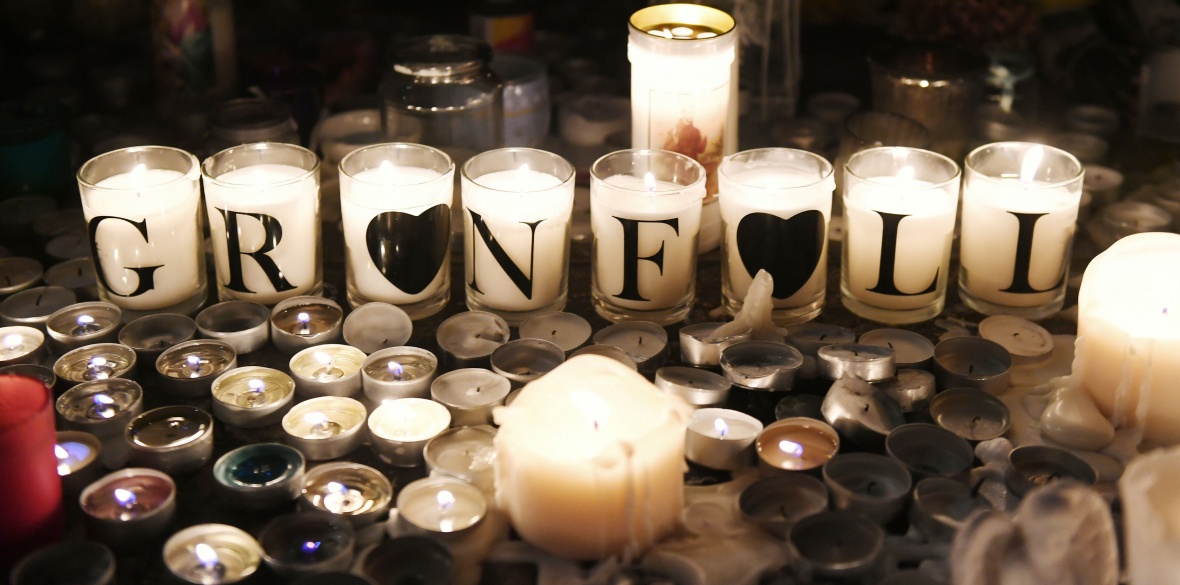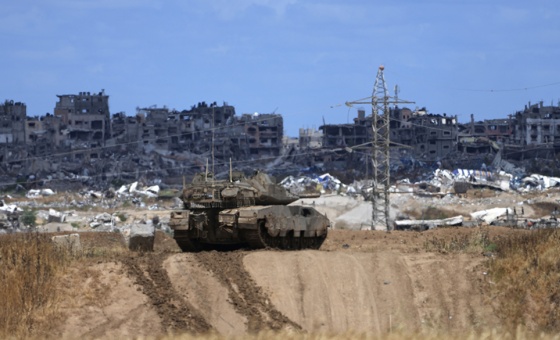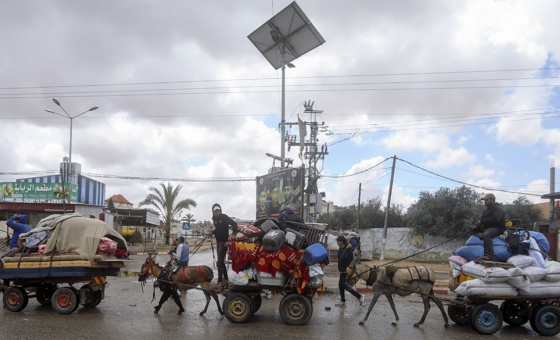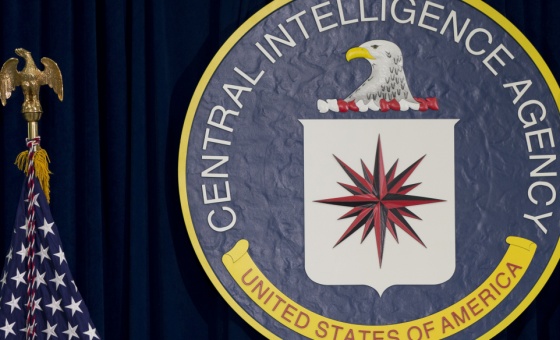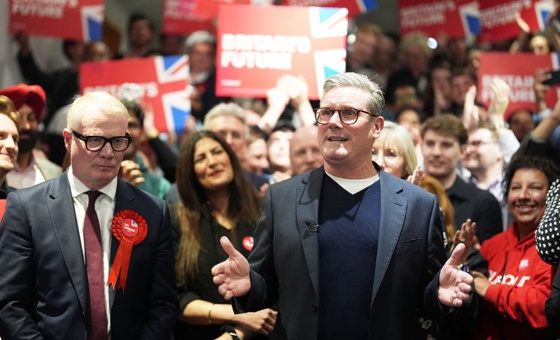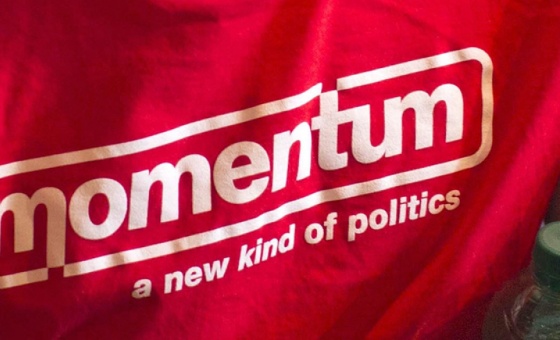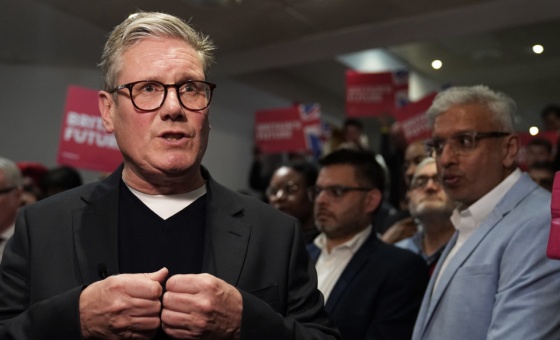This is the last article you can read this month
You can read more article this month
You can read more articles this month
Sorry your limit is up for this month
Reset on:
Please help support the Morning Star by subscribing here
OF all the stories about the Grenfell Tower fire disaster, it is the social media post of the last moments of a young mother of two that returns to my thoughts repeatedly.
I do not know why Rania Ibrahim and her children died that day, trapped on the 24th floor of a poorly constructed London tower block with a single fire exit. One day, I hope that there will be answers to the many questions that Grenfell raises for our society.
On June 14 2017, the day of the fire, I awoke unusually early. The midsummer sun streamed through my bedroom window and, as I lay gazing up at the clear blue sky, there was no inkling of what was about to come.
Little did I know that, six months on, I would be writing about the death of a woman I’d never met with pain in my heart and tears in my eyes.
That morning, I checked my phone as usual and found frantic messages from a friend living near the tower who had posted pictures of the inferno. I switched on the news and gasped at the scene playing across my screen.
It was 5am and all I could think was that the building had failed to contain an outbreak of fire as it should have done. It was the only explanation for a blaze of that magnitude. What was puzzling was the speed at which it developed.
In the weeks that followed, I, like many other journalists, worked on various aspects of the investigation in mainstream media.
Within hours, I’d established that the cladding had been switched from an organic, non-combustible system to the cheaper and highly flammable combination. The cladding ignited shockingly quickly to create a grotesque fire.
Citizen video shot long before TV crews arrived on the scenes showed that the external fire began around 12.45pm and almost all of one side of the building was on fire by 1.30am.
ITV video of fire crews arriving on the scene showed a building beyond the reach of firefighters. The stunned reaction of experienced firefighters showed that they knew the likelihood of quickly extinguishing the fire was negligible.
The only option for the people hanging out of windows on every floor was evacuation.
But the single staircase quickly became engulfed in smoke, putting an end to any hope of reducing casualties.
This was even though a new smoke dispersal system had been installed when the building had been controversially refurbished a few years earlier
By 1.30am, survivors report clambering over bodies piling up on the stairs overcome by toxic fumes, and squeezing past firefighters making their way into the building.
It was a scene of utter carnage as, unable to go down, victims made their way to the upper floors in the hope that they would be rescued.
In the days and weeks that followed, a story of neglect, difference and contempt emerged.
Today is a day to remember the suffering of 225 survivors and mourn the death of 71 confirmed dead.
A national memorial service is being held in the name of the victims of Grenfell Tower at St Paul’s Cathedral to remember the victims of Britain’s worst fire since the second world war. The service will be broadcast live by the BBC.
Grenfell United chair Shahin Sadafi said: “December 14 will be a special day for our community. We are coming together to remember the loved ones we lost in the fire, to unite as a community and to start to build hope for the future. We hope we can come together as a nation and show our support to the bereaved families, survivors of the tower and the affected community.”
Kensington and Chelsea Council leader Elizabeth Campbell will not attend the service at the cathedral following a request from bereaved families. Neither will there be any official council representation at the service.
Prime Minister Theresa May will take her place at the event despite criticisms that she has failed survivors. She’s unlikely to receive a warm welcome.
Grenfell Tower survivors and families of the bereaved made the request to hold the National Memorial Service at St Paul’s. Ironically, the building itself was constructed following the Great Fire of London at a cost of the modern-day equivalent of £150 million.
During the second “great fire of London” — a night of sustained enemy bombing in World War II, Winston Churchill ordered that all firefighting resources be directed at St Paul’s.
The cathedral must be saved, he said, because damage to the fabric of the cathedral would sap the morale of the country.
In a break with tradition, Prince Charles married Princess Diana there, to become the “people’s prince,” but the iconic building is as much a symbol of status, class and power as the historic institutions of the crown and Churchill’s old order.
So it is ironic that the Grenfell survivors will be joining a lengthy list of British politicians, royalty and clergy in the cathedral’s ornate interior for the memorial.
The Prince of Wales, the Duchess of Cornwall, the Duke and Duchess of Cambridge and Prince Harry will be in attendance. Even as royalty marries into modernism, it’s not clear if the institution of the crown will succeed in maintaining power by popularity after Grenfell.
If Grenfell is a symbol of the class war taking place in British society, the space the crown finds to occupy within that landscape will be defined by what the institution can do to help the people amid this battle for social equality taking place in Britain.
Lancaster West Residents’ Association chair Jacqui Haynes says: “The people in Grenfell Tower were forgotten about and ignored before the fire and this is a chance for people across the country to unite and stand with us.”
The communities around Grenfell have mixed views on the service — if they have registered that it is to take place.
Angry volunteers posted on social media that the migrant families they support have been excluded from the service because of language barriers.
For many migrant Muslim families, an Anglican service in English is seen in a very different light from that which perhaps the cathedral intended.
And in death, as in life, and the residents of Grenfell have faded into insignificance beside the dazzling stars of celebrity and privilege who are lining up to attend the memorial service.
Amid all the splendour and ceremony, let us recall Rania Ibrahim’s last moments.
Trapped on the 24th floor, the mother of two could be heard begging for help in a video recording she posted at 2.54am on the morning of the tragedy.
The video is a devastating document of the time the smoke reached the 24th floor. We hear the occupants of the flat tell her to close the front door because “you will bring the smoke in. You won’t be able to breathe. Your children … ”
As the voice tails off, we know the inevitable truth of what is about to happen.
Rania’s voice echoes into the eerily empty corridor as she calls into the silence: “Hello, is anybody there?”
As smoke fills the air, a neighbour appears out of the darkness. A frantic banging is heard: “Hello, hello?”
A man says the smoke is coming. Rania’s quiet tone masks the terror in her voice as she desperately prays in Arabic. Her camera is trained on the bottom of the tower and a siren is heard. Screaming subsides.
Beside her, a strong voice shouts: “Hello! There’s too many people stuck on the 23rd floor. Hello!” And then nothing.
Little is known of what happened inside Grenfell Tower between midnight and 3am on the night in question. Rania Ibrahim and her neighbours did not burn to death. Instead they died of smoke inhalation, trapped in a 24-storey building with a single fire exit and a newly installed smoke dispersal system which seemingly failed to keep the staircase free from smoke for long enough for all the occupants to escape.
Did brave Rania know she was going to die in the moments after her video was posted for posterity? Almost certainly.
Rania’s whispered prayer for forgiveness as she prepared to meet her God with her children in her arms will stay with me for years to come. How could any of us ever forget?

